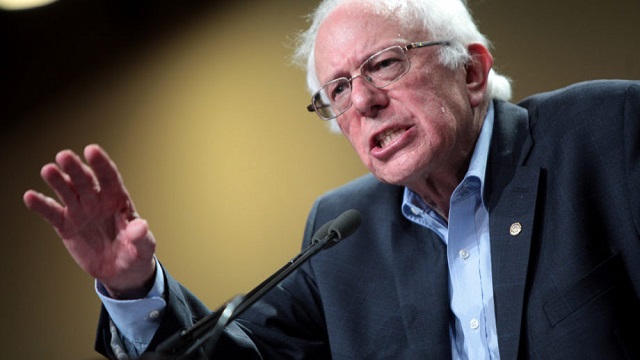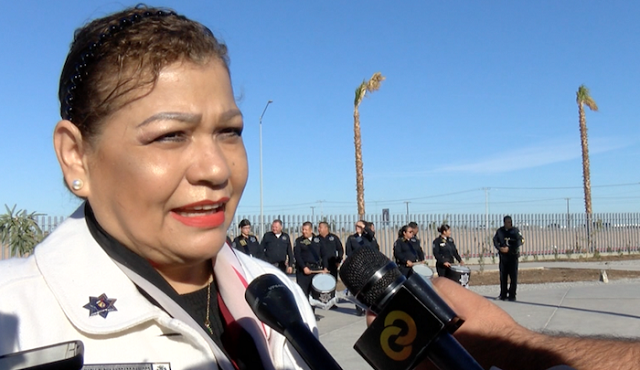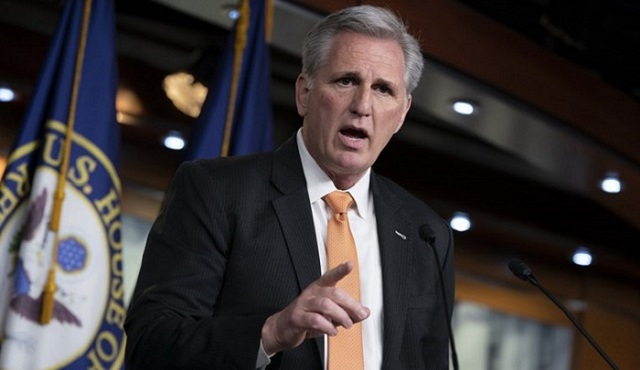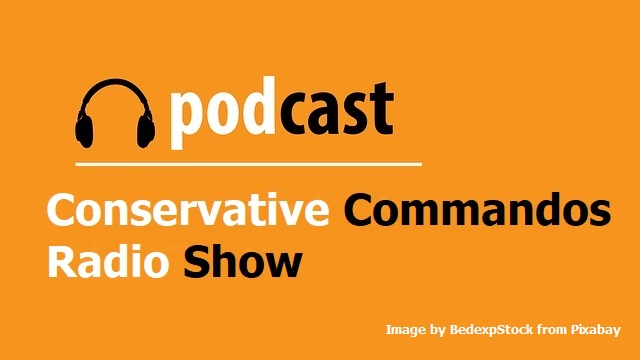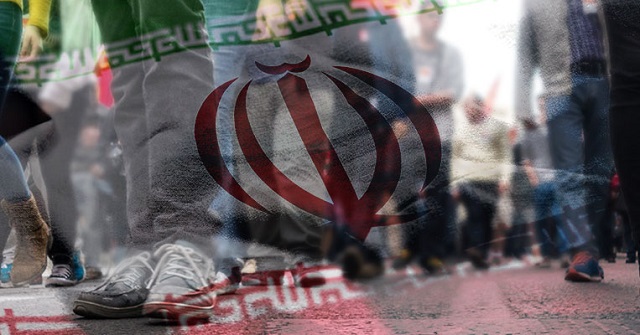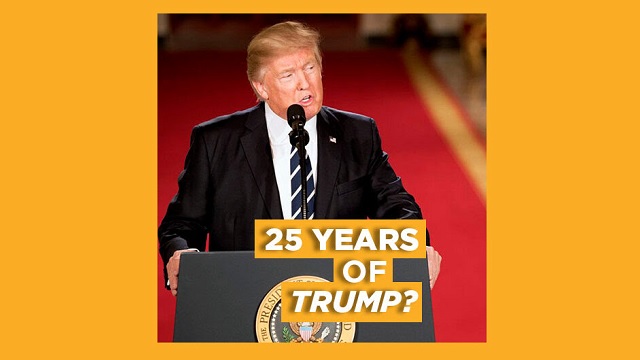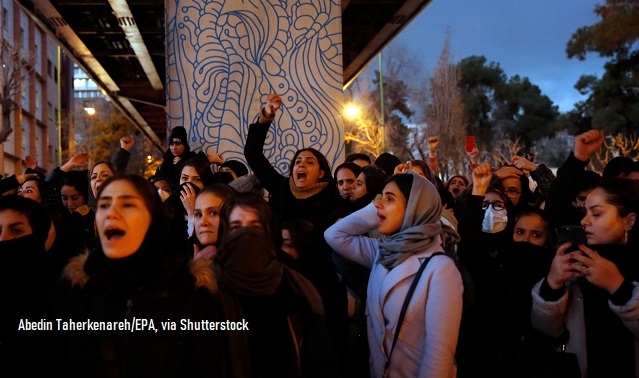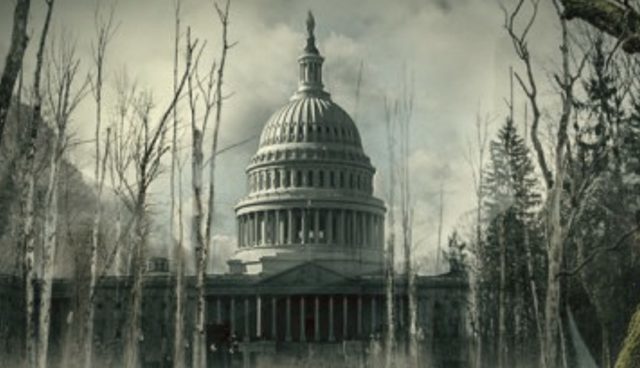
American government has far outgrown the limits set by our founders in the Constitution.
This article is adapted from a study prepared by the Institute for Policy Innovation.
Let us begin with a simple but vitally important proposition: Government in America was never supposed to engage in the multitude of activities that it does today.
When the United States gained its independence more than 200 years ago, the founding fathers envisioned a national government with explicit and restricted responsibilities. These responsibilities pertained mainly to protecting the security of the nation and ensuring “domestic tranquility,” which meant preserving public safety. Especially in the realm of domestic affairs the founders foresaw very limited government interference in the daily lives of its citizens. The founders did not create a Department of Commerce, a Department of Education, or a Department of Housing and Urban Development. This was not an oversight: They simply never imagined that the national government would take an active role in such activities.
The minimal government involvement in the domestic economy would be funded and delivered at the state and local levels. Even that involvement was to be restricted by Congress’ authority over interstate cornmerce, an authority granted to Congress by the founders for the purpose of preventing the state governments from interfering with commerce.
Recognizing the propensity of governments to grow, the people added the Bill of Rights to the Constitution as an additional layer of protection for the rights of individuals against the state. The Bill of Rights was to ensure that government would never grow so large that it could trample on the individual and economic liberties of American citizens. These liberties are eroding. The United States has been gradually transformed from a nation with almost no government presence in the marketplace to one in which the government is now the predominant actor in the domestic economy. Consider the following:
- There are now more Americans employed by government than by the entire manufacturing sector in America.
- In the past 25 years the federal government has spent $2.5 trillion on welfare and aid to cities. This is enough money to purchase all of the assets of the Fortune 500 companies plus all of the farmland in the United States.
- In 1987 U.S. farmers received more money in government subsidies than they did in selling their crops in the marketplace. In short, farmers now produce for the government, not for U.S. consumers.
- In three states today—California, Maine, and New York—almost half of all middle-income family wages are captured by government through income, payroll, property, and sales taxes, and other levies.
Why is the American public not rising up in protest? The answer seems to be that the growth of government has been sufficiently gradual over the past 50 to 100 years that most Americans today probably believe that this is the way government in America ought to act and has always acted.
Both of these contentions are wrong. Government has not always, and ought not, act as it does now. The following sections demonstrate with the aid of graphs and figures how government has grown over our nation’s history. We examine federal, state, and local government growth in five areas: expenditures, taxes, debt, welfare and transfer payments, and employment.
We standardize the measurement of each of these government growth indices in three ways: in real 1990 dollars, in real per capita 1990 dollars, and as a share of total output or income. Unless otherwise indicated, all figures are presented in 1990 dollars. Except in a few specified instances, all of the data are from standard government sources.
Federal Outlays
Perhaps the best measure of the impact of government activity is how much it spends each year. Figure 1 shows the expansion of the federal budget from 1800 to 1992. As the steep ascent shows, federal spending has exploded more than ten thousandfold since 1800 with almost all of the increase in the past 40 years. Real federal outlays have climbed from $0.1 billion in 1800 to $0.6 billion in 1850, to $8.3 billion in 1900, to $235.1 billion in 1950, to $1,450.0 billion in 1992.
Figure 1
Real Federal Outlays, 1800-1992
Of course, the nation is much larger today than in earlier periods, so one would expect government also to be bigger. Figure 2 shows the per capita level of federal spending over time. Even when adjusting for the growth in population size (and inflation), federal expenditures have mushroomed:
Figure 2
Real Per Capita Federal Outlays, 1800-1990
- The federal government spent $16 per person in 1800, $27 per person in 1850, $109 per person in 1900, $1,544 per person in 1950, and $4,760 per person in 1990.
Bear in mind, this does not include the cost of back door spending, such as mandates and regulations. If they were included here, the cost of the federal government per person today would easily exceed $10,000.
One of the most meaningful ways of measuring the burden of government is how much it spends relative to total economic output. One might argue that government spends more money today because the American economy has grown so much larger than in earlier periods. If government is consuming the same proportion of total output in two periods, then the economic burden of paying for its activities is roughly the same, even if expenditures are much larger in the later period. Unfortunately, federal spending is not keeping pace with economic growth—it is far outpacing economic growth:
- In 1900 the federal government consumed less than 5 percent of total output.
- In 1950 the federal government consumed roughly 15 percent of total output.
- In 1992 the federal government consumed almost 25 percent of total output.
The Composition of Federal Outlays
The single most important activity of the federal government is to provide for the national defense. A free nation spends as much as necessary to protect its borders and its citizens. Is the modern-day growth of government on the federal level a result of the national defense build-up in the Cold War era? The answer is clearly no. National defense spending as a share of the total federal budget has been continually shrinking, with the exception of brief periods of war:
- Defense spending constituted more than half of total federal outlays in 1800.
- Defense spending constituted more than one-third of federal outlays in 1900.
- Defense spending now constitutes little more than one-fifth of federal outlays.
The flip-side of this steady reduction of defense expenditures as a share of the budget is an expansion in spending on civilian programs, such as agriculture, health care, housing, and aid to state governments. Until the 1930s, the federal government spent almost nothing in each of these areas. This rise has been most prominent since 1950.
Figure 3 shows the tremendous growth in federal health care spending, from $100 million in 1900 to $156 billion in 1990.
Figure 3
Real Federal Health Care Expenditures, 1900-1990
These data on federal domestic spending powerfully refute the common complaint by special interest groups that favored domestic programs have been substantially cut back in recent years. Although there were modest spending reductions on selected domestic programs in the Reagan years, in 1992 the outlays for every major domestic area of the budget were at an all-time high—with the exception of agriculture.
State and Local Spending
Some budget analysts claim that federal spending has increased to compensate for budget reductions on the state and local levels. The data show otherwise:
- In 1900 states spent $32 per person.
- In 1950 states spent $470 per person.
- In 1990 states spent $1,934 per person.
On the local level, per capita expenditures have been rising rapidly as well, though not as rapidly as federal and state expenditures. For every dollar that local governments spent per person in 1900, they spent $2.50 in 1950 and $8.50 in 1990.
Although the 1980s are commonly reported to have been a decade of government neglect, this assertion is contrary to fact. State expenditures, for example, rose at twice the inflation rate in the 1980s. Local expenditures grew nearly as fast as state expenditures. Moreover, celebrated cutbacks in federal aid to localities were almost entirely replaced by increases in state aid to local governments. In sum, the past decade was one of the most expansive for state and city budgets in U.S. history.
Total Federal, State, and Local Expenditures
In 1900 government in America was still, by today’s standards, comparatively lean and efficient. At that time, total federal, state, and local expenditures were $26 billion. Americans now support a nearly $2.5 trillion government, almost a 100-fold increase in real outlays. (See Figure 4.)
Figure 4
Real Federal, State, and Local Government Expenditures, 1900-1990
Both as a share of total output and on a per-person basis, this is a substantial amount of government to have to pay for.
- Government consumed almost 10 percent of GNP in 1900 and now consumes more than 35 percent.
- Government spent $1,650 for every household in 1900 and today spends $23,140. (See Figure 5.)
Figure 5
Real Total Government Expenditures per Household, 1900-1990
In sum, whatever social and economic problems confront America today, they are clearly not a result of a neglectful or under-funded public sector.
Total Taxes
The American Revolution has been called the greatest tax revolt in world history. Yet as a result of the growth of government expenditures described above, taxes are now at levels that would have been inconceivable 200, 100, or even 50 years ago. Today, when combining federal, state, and local taxes, many middle-income Americans work a larger share of the day to pay the government’s bills than their own. Even the tax revolt of the late 1970s and early 1980s proved to be merely a temporary restraint on the demands of the government tax collector. Consider the percentage of income that is seized by government in taxes:
- In 1930 workers paid one of every eight dollars of them income in taxes.
- In 1950 workers paid one of every four dollars of their income in taxes.
- In 1992 workers paid one of every three dollars of their income in taxes.
The tax burden is even more clearly expressed by examining taxes paid per household as shown in Figure 6.
Figure 6
Real Total Government Taxes per Household, 1900-1990
- In 1900 the average family paid nearly $1,400 in taxes.
- In 1950 the average family paid nearly $7,000 in taxes.
- In 1992 the average family paid over $16,000 in taxes.
This rising tax burden has meant that workers have less take-home pay for consumption and savings. It also means that workers’ incentive to work and employers’ incentive to hire are impeded by excessive taxes. These figures do not even include the cost to American individuals and firms of complying with complicated and time-consuming tax laws. By one estimate, Americans spend 5.4 billion hours at an annual cost of $600 billion to the economy just completing the paperwork requirements of federal taxes.
The Federal Tax Burden
Reliable federal tax data are available back to 1800. For the first 100 years of the nation, taxes were very low. In colonial times opposition to high taxes was deeply ingrained in the American spirit, and this hostility lasted throughout the nineteenth century. Government revenues predominantly came from two sources: revenue tariffs and land sales. The limited sources of revenues for the federal government were a natural restraint on its expenditures. Three events changed that. The first was the imposition of the income tax in 1913. The second was the two World Wars, which made the American people accustomed to very high tax rates. And the third was the creation of the Social Security program with gradually rising payroll taxes.
Taxes were relatively stable until 1900. It was not until World War II that the federal tax burden rose about threefold.
- In 1800 per capita federal taxes were $20.
- In 1900 per capita federal taxes were $110.
- In 1950 per capita federal taxes were $1,460.
- In 1990 per capita federal taxes were $4,000.
Income Taxes
The most dreaded tax for the vast majority of Americans is the income tax. Until the ratification of the Sixteenth Amendment, there was no federal income tax—the Supreme Court had consistently ruled the income tax unconstitutional. No law has contributed to the growth of government and the surrender of personal liberties and privacy rights more fully than the creation of the federal income tax. Today, more so than any other federal agency, the Internal Revenue Service has broad and sweeping powers to investigate the personal activities and finances of Americans. Without a search warrant, the IRS has rights to search the property and financial documents of American citizens. Without a trial, the IRS has the right to seize property from Americans.
The income tax burden on the federal level has been continually climbing. During periods of war, income taxes have been substantially raised, and they never are reduced to their pre-war levels. Today, the average American household pays almost $6,000 in federal income taxes, double the 1950 burden.
States have also become much more reliant upon income taxes as a source of revenues in the past 50 years. Prior to World War II only a handful of states even imposed any income tax. Today, only nine states do not have an income tax, and four of those are considering introducing one. Today state and city governments raise about $110 billion per year through income taxes. Statistics show the rising share of income taxes as a share of total state and local taxes:
- In 1900 state and local governments raised none of their revenues through income taxes.
- In 1960 state and local governments raised 10 percent of their revenues through income taxes.
- In 1992 state and local governments raised 26 percent of their revenues through income taxes.
The increased reliance of government at all levels on the income tax is a disturbing trend. Almost all studies show that income taxes have the most damaging effect on economic growth, entrepreneurship, and employment, because they are a direct tax on work and business success. They have a punitive effect on the most vital activities in a growing economy.
Tax Rates and Payroll Taxes
As with tax revenues, tax rates have climbed during the twentieth century. When the first individual income tax was passed in 1913 the rates ranged from 1 to 7 percent. At the time, opponents charged that it would not be long before the rates were raised to the unthinkable level of 10 percent! Supporters countered that this would never happen. History has proven them wrong:
- By 1916 the top rate was more than doubled to 15 percent.
- By 1917, the start of World War I, the top rate was raised to 67 percent.
- In 1944, during World War II, the top rate was raised to 94 percent.
- In the 1950s the top tax rate remained at 91 percent.
- During the Reagan years the top marginal rate was chopped to 28 percent.
- Today the top marginal rate is 32 percent with proposals in Congress to raise the rate to 40 percent or more.
Although the Kennedy and Reagan administrations cut the tax rates, at lower rates the government is collecting more revenue than ever before. For instance, from 1980 to 1992 federal income tax collections rose by roughly $150 billion. Moreover, the share of the income tax burden borne by the richest 10 percent of Americans rose from 48 to 56 percent from 1981 to 1989. Virtually every country in the world today recognizes the economic benefits of lower marginal tax rates in stimulating work and in attracting investment. Every industrialized nation in the world has lower marginal income tax rates today than in 1980.
Although income tax rates have been shaved in the past decade, for middle income American families with children the income tax burden is higher than ever before. One reason is that the value of the dependent child exemption has steadily eroded over the inflationary post-World War II period. Figure 7 shows:
• In 1950 the exemption was $600 per child. In 1990 dollars, for a family with four children it would have been worth $13,260.
• In 1989 the value of the personal exemption was $2,000 per child, or $8,000 for a family with four children.
• The failure of the dependent exemption to keep pace with inflation means that the average family with four children pays taxes on $5,000 more income than it otherwise would.
Figure 7
Value of Federal Income Tax Dependent Exemption
Family with Four Children, 1950-1989
Another reason that the middle class is feeling the crushing burden of taxes in recent years is that Social Security payroll taxes have continually risen since their inception in 1937. Figure 8 shows:
- The first Social Security payroll tax rate, which was in place from 1937 to 1950, was 2 percent.
- By 1970, after the introduction of Medicare and the hospital insurance tax, the payroll tax rate was 9.6 percent.
- By 1980 the rate was 12.3 percent.
- By 1990 the rate was 15.3 percent.
Figure 8
Social Security Tax Rate, 1940-90
Today, the average middle-income family pays a greater share of its income in payroll taxes (when including the employer’s share of that tax) than in income taxes. That is why reducing payroll taxes may be the most effective means of reducing the tax burden on middle-income and low-income working families.
Borrow and Spend
In the past several decades the government’s modus operandi, tax and spend, has been expanded to include a new government financing scheme: Borrow and spend. For the first 150 or so years of this nation, government borrowing was confined to times of war. There was a moral, though not a Constitutional, imperative that government not pass on the costs of its spending to future generations. This moral restraint lasted until the 1930s.
During the Great Depression the most prominent economist of the first half of the twentieth century, John Maynard Keynes, introduced his economic theory, which in effect legitimized deficit finance as an appropriate tool of government. The Keynesian theory was that government should borrow when times are tough and then pay back the debt during times of economic expansion. President Franklin Roosevelt was the first president to embrace this theory, which fit well with his New Deal domestic spending plans. By stripping away the prevailing moral restraint against government borrowing, Keynes opened the floodgate for massive deficit spending. By 1970, Richard Nixon declared, “We are all Keynesians now,” a prophetic statement. Government red ink would soon flood to once unthinkable heights as each subsequent Congress used more and more debt as a way of avoiding having to say no to the army of Washington special interests with insatiable demands for taxpayer money.
- The federal government has only balanced the budget once in the past 25 years.
- In 1992 the federal deficit reached an all-time high of $290 billion, a peacetime record and 6.5 percent of GDP. The 1993 deficit is expected to break that record.
- The federal government now borrows $700,000 million every minute of every day, 365 days a year—more than $11,000 every second.
One consequence of this borrowing binge has been a mushrooming of the national debt. Figure 9 shows:
- In 1900 each family of four carried a $2,600 share of the national debt.
- In 1950, each family of four carried a $41,000 share of the national debt.
- Today each family of four carries a $62,000 share of the national debt.
Figure 9
Real Federal Debt per Family of Four, 1900-1992
Interest on the Debt
Another consequence of this borrowing binge to finance a massive expansion of government programs has been that Americans are paying more and more taxes just to pay interest on the debt. Figure 10 shows that interest is one of the fastest growing areas of the federal budget:
- In 1900 interest expenditures were $1 billion.
- In 1960 interest expenditures were $31 billion.
- In 1992 interest expenditures reached $200 billion.
Figure 10
Real Federal Interest Expenditures, 1870-1992
The American public understands full well that no institution can continue to spend beyond its means year after year without risking financial ruin. Perhaps the only way to end this fiscally reckless pattern of deficit spending is to amend the Constitution with a balanced budget/tax limitation requirement. Such a measure commands the support of three-fourths of the public—and has so for almost two decades. Yet, for obvious reasons, Congress has been reluctant to slay its cash cow. Even when the deficit set new records in 1992, the House of Representatives defeated the balanced budget amendment.
A Nation “Entitled”
A great challenge in modern-day America is to find some member of the public who does not receive a check from the government for one purpose or another. Every week the federal government sends out billions of dollars to farmers for growing (and in some cases, not growing) crops; to veterans for health care or retirement; to the unemployed for not working; to those with low incomes to pay for food and shelter; to college students to pay for school; to the elderly for being retired; to the elderly and poor to pay for health care; to unwed mothers to pay for the care of their children; and on and on. Fifty or 100 years ago most of these transfer programs did not exist. Today even the slightest whisper of budget cutbacks in these programs is met with howls of protest. In short, we have become a nation of citizens who regard themselves as entitled to the largesse of government.
What is the impact of such spending on economic growth? None of these programs is oriented toward the legitimate function of government in ensuring the public safety, nor are they even building bridges or roads or cleaning the environment. These programs are not designed to create wealth in our society; they are designed solely to redistribute it. Thereby, they interfere with and destroy the wealth creation process.
The alarming trend in federal, state, and local social welfare spending can be tracked from 1900, because prior to that time there were virtually no federal transfers, except for veterans’ benefits, and the only signifi cant state and local transfers were small public aid programs.
- In 1900 the government spent $10 billion on social welfare.
- In 1950 the government spent $130 billion on social welfare.
- In 1988 the government spent $980 billion on social welfare.
It is noteworthy that in 1950 these transfer programs constituted roughly 12 percent of the federal budget. Today they consume almost 40 percent. In the 1989 to 1992 period alone, real federal expenditures on entitle ments grew by $140 billion.
Welfare
A huge portion of our social welfare spending today is for Social Security. Social Security is the largest and most popular program in the federal budget. Some have suggested that it is only Social Security that is growing rapidly, not other income transfer programs, such as welfare. This is not so. The anti-poverty programs are growing too. Total Aid to Families with Dependent Children (AFDC) spending at all levels of government has increased dramatically over the past 50 years:
- In 1940 public assistance spending was $1.3 billion.
- In 1970 public assistance spending was $16.6 billion.
- In 1992 public assistance spending was $18 billion.
The primary reason that total welfare spending is growing is not that the benefit levels are substantially more generous, but rather that welfare caseloads continue to explode. The number of AFDC recipients continues to grow:
- In 1936 in the middle of the Depression there were just over one-half million recipients.
- In 1950 there were 2.2 million recipients.
- In 1970 there were 9.7 million recipients.
- In 1992 there were 13 million recipients.
Other public welfare programs show the same pattern of increase. For example, the food stamp program, started with a budget of less than $2 billion in 1970, now has a budget of $23 billion. Today there are roughly 25 million people collecting food stamps—or nearly one of every ten Americans. Millions of able-bodied Americans are now collecting government checks, making welfare one of the fastest growth industries in America today.
Despite the huge outlays on anti-poverty programs, this spending has done amazingly little to reduce poverty. One reason for this lack of success is that welfare spending is badly misallocated. Another is that welfare spending actually creates poverty.
- In 1990 government anti-poverty spending equaled $184 billion.
- In 1990 it would have cost only $75 billion to bring every family with an income below the poverty level up above that benchmark. Hence, government was spending two-and-a-half times what would be needed to end poverty in America.
- However, after that $184 billion was spent, some 30 million Americans remained below the poverty level.
- More than half of all welfare recipients had pre-welfare incomes above the poverty level.
- The welfare industry intercepts a huge portion of anti-poverty funds. In cities such as Milwaukee, there are now 62 separate welfare programs, each with its own bureaucratic costs.
All told, since the early 1960s, government at all levels has spent $3.5 trillion on programs for the poor. Yet there are more poor in 1993 than there were in 1963. Sadly, there is much truth to the adage that America has fought a war on poverty, and poverty won.
Civilian Employees
Government bureaucracy has grown at a steady pace at the federal, state, and local levels. In the past 20 years private sector union membership has shrunk, while public sector unions have record membership. Most of this growth in public employment has been at the state and local levels.
Today there are 18 million civilian government employees, up from 8.5 million ill 1960 and 4.5 million in 1940. For the first time ever, in 1992 there were more civilian public sector employees than manufacturing employees in the U.S., as shown in Figure 11.
Figure 11
Government Employment Outpacing Manufacturing Employment
With the growth in the number of government workers, America has witnessed a growth in government payrolls:
- In 1940 government spent $5 billion on monthly payroll.
- In 1960 government spent $14 billion on monthly payroll.
- In 1990 government spent $36 billion on monthly payroll.
Although the 1980s are conventionally believed to have been a decade of hardship for public employees, the truth is that on the state and local levels government pay went up much faster than private sector pay. A 1992 report by the American Legislative Exchange Council (ALEC) shows:
Average state and local government employee compensation (including wages, salaries, and employee benefits) has been rising more quickly than average private employee compensation for 40 years . . . . Average state and local government employee compensation increased by an inflation- adjusted 14.6 percent, or $4,031, in 1989 compared to 1980. For every new dollar of average compensation increase for private sector employees, state and local government employees received more than $4.20.
Hence, today the compensation for public employees in many areas and many occupations is significantly above that of private sector workers. The government is a very generous employer, as illustrated by the following examples:
- The average public sector bus driver earns 70 percent more than the average private sector bus driver.
- Reliable studies show that postal workers make fully one-third higher salaries and benefits than comparably skilled private sector workers.
- The voluntary quit rate from the federal government was lower in 1987 than the private sector quit rate during the peak of the Great Depression when unemployment rates exceeded 20 percent.
- The average pay for a New York City school janitor is $57,000, with some earning as much as $80,000.
- After 15 years on the job, the average New York City employee receives 51 days off, including holidays, vacation time, sick leave, and so on. That is, some New York city employees work the equivalent of 4 days a week.
As the ALEC study concludes, America’s government workers have become “a protected class.” Unfortunately, for the taxpayers who pay their inflated salaries, these workers are a rapidly growing protected class.
Military Employees
These numbers do not include the largest government employer of all: the military. Indeed, the U.S. Department of Defense is the largest employer in the United States—public or private. The number of Americans employed in the armed services has continually risen:
- In 1800 there were 7,000 military personnel.
- In 1850 there were 20,000 military personnel.
- In 1900 there were 125,000 military personnel.
- In 1950 there were 1,500,000 military personnel.
- In 1990 there were 2,200,000 military personnel.
These numbers do not include any of the civilians who work for defense contractors producing weapons, providing equipment, and performing research and development. If these indirect government workers, part of the military-industrial complex, were included, the employment numbers could easily double.
Conclusion
American government has far outgrown the limits set by our founders in the Constitution. If the twenty-first century is to be the American century, government must be redirected to its proper and legitimate role. The growth of government is the greatest tragedy of the twentieth century.
For a copy of the complete report from which this essay is taken, please contact The Institute for Policy Innovation.
COLUMN BY
EDITORS NOTE: This FEE column is republished with permission. All rights reserved.



